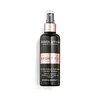What's inside
What's inside
 Key Ingredients
Key Ingredients

 Benefits
Benefits

 Concerns
Concerns

 Ingredients Side-by-side
Ingredients Side-by-side

Water
Skin ConditioningPropylene Glycol
HumectantAloe Barbadensis Leaf Juice
Skin ConditioningSucrose
HumectantButylene Glycol
HumectantGlycerin
HumectantRosa Damascena Flower Water
MaskingPhenoxyethanol
PreservativePhenethyl Alcohol
MaskingAllantoin
Skin ConditioningDisodium EDTA
Citrus Paradisi Fruit Extract
Skin ConditioningSodium Hydroxide
BufferingBenzyl Alcohol
PerfumingCitric Acid
BufferingPotassium Sorbate
PreservativeSodium Benzoate
MaskingLapsana Communis Flower/Leaf/Stem Extract
Skin ConditioningCitronellol
PerfumingGeraniol
PerfumingCamellia Sinensis Leaf Extract
AntimicrobialDehydroacetic Acid
PreservativeWater, Propylene Glycol, Aloe Barbadensis Leaf Juice, Sucrose, Butylene Glycol, Glycerin, Rosa Damascena Flower Water, Phenoxyethanol, Phenethyl Alcohol, Allantoin, Disodium EDTA, Citrus Paradisi Fruit Extract, Sodium Hydroxide, Benzyl Alcohol, Citric Acid, Potassium Sorbate, Sodium Benzoate, Lapsana Communis Flower/Leaf/Stem Extract, Citronellol, Geraniol, Camellia Sinensis Leaf Extract, Dehydroacetic Acid
Water
Skin ConditioningAlcohol Denat.
AntimicrobialPropylene Glycol
HumectantAmp-Acrylates/Allyl Methacrylate Copolymer
Benzyl Alcohol
PerfumingDehydroacetic Acid
PreservativePEG-40 Hydrogenated Castor Oil
EmulsifyingTocopheryl Acetate
AntioxidantAloe Barbadensis Leaf Juice
Skin ConditioningHelianthus Annuus Seed Oil
EmollientPanthenol
Skin ConditioningRetinyl Palmitate
Skin ConditioningLinseed Acid
CleansingSorbitol
HumectantAesculus Hippocastanum Seed Extract
Skin ConditioningSodium Benzoate
MaskingBHT
AntioxidantWater, Alcohol Denat., Propylene Glycol, Amp-Acrylates/Allyl Methacrylate Copolymer, Benzyl Alcohol, Dehydroacetic Acid, PEG-40 Hydrogenated Castor Oil, Tocopheryl Acetate, Aloe Barbadensis Leaf Juice, Helianthus Annuus Seed Oil, Panthenol, Retinyl Palmitate, Linseed Acid, Sorbitol, Aesculus Hippocastanum Seed Extract, Sodium Benzoate, BHT
Ingredients Explained
These ingredients are found in both products.
Ingredients higher up in an ingredient list are typically present in a larger amount.
Aloe Barbadensis Leaf Juice comes from leaves of the aloe plant. Aloe Barbadensis Leaf Juice is best known for helping to soothe sunburns. It is also anti-inflammatory, moisturizing, antiseptic, and can help heal wounds.
Aloe is packed with good stuff including Vitamins A, C, and E. These vitamins are antioxidants, which help fight free-radicals and the damage they may cause. Free-radicals are molecules that may damage your skin cells, such as pollution.
Aloe Barbadensis Leaf Juice also contains sugars. These sugars come in the form of monosaccharides and polysaccharides, folic acid, and choline. These sugars are able to help bind moisture to skin.
It also contains minerals such as calcium, 12 anthraquinones, fatty acids, amino acids, and Vitamin B12.
Learn more about Aloe Barbadensis Leaf JuiceBenzyl Alcohol is most commonly used as a preservative. It also has a subtle, sweet smell. Small amounts of Benzyl Alcohol is not irritating and safe to use in skincare products. Most Benzyl Alcohol is derived from fruits such as apricots.
Benzyl Alcohol has both antibacterial and antioxidant properties. These properties help lengthen the shelf life of products. Benzyl Alcohol is a solvent and helps dissolve other ingredients. It can also improve the texture and spreadability.
Alcohol comes in many different forms. Different types of alcohol will have different effects on skin. This ingredient is an astringent alcohol.
Using high concentrations of these alcohols are drying on the skin. They may strip away your skin's natural oils and even damage your skin barrier. Astringent alcohols may also irritate skin.
Other types of astringent alcohols include:
According to the National Rosacea Society based in the US, you should be mindful of products with these alcohols in the top half of ingredients.
Any type of sanitizing product will have high amounts of alcohol to help kill bacteria and viruses.
Learn more about Benzyl AlcoholDehydroacetic Acid is fungicide and bactericide. It is used as a preservative in cosmetics. Preservatives help elongate the shelf life of a product.
Dehydroacetic Acid is not soluble in water.
Propylene Glycol is an odorless, colorless liquid. As a humectant, it helps skin retain moisture. It also aids in delivering active ingredients.
Another role of this ingredient is preventing a product from melting or freezing. Propylene glycol also adds antimicrobrial properties to a product, elongating product lifespan.
This ingredient is considered an organic alcohol and commonly added into both cosmetics and foods.
Those with sensitive skin or conditions may develop a rash when using this ingredient.
Learn more about Propylene GlycolSodium Benzoate is a preservative. It's used in both cosmetic and food products to inhibit the growth of mold and bacteria. It is typically produced synthetically.
Both the US FDA and EU Health Committee have approved the use of sodium benzoate. In the US, levels of 0.1% (of the total product) are allowed.
Sodium benzoate works as a preservative by inhibiting the growth of bacteria inside of cells. It prevents the cell from fermenting a type of sugar using an enzyme called phosphofructokinase.
It is the salt of benzoic acid. Foods containing sodium benzoate include soda, salad dressings, condiments, fruit juices, wines, and snack foods.
Studies for using ascorbic acid and sodium benzoate in cosmetics are lacking, especially in skincare routines with multiple steps.
We always recommend speaking with a professional, such as a dermatologist, if you have any concerns.
Learn more about Sodium BenzoateWater. It's the most common cosmetic ingredient of all. You'll usually see it at the top of ingredient lists, meaning that it makes up the largest part of the product.
So why is it so popular? Water most often acts as a solvent - this means that it helps dissolve other ingredients into the formulation.
You'll also recognize water as that liquid we all need to stay alive. If you see this, drink a glass of water. Stay hydrated!
Learn more about Water